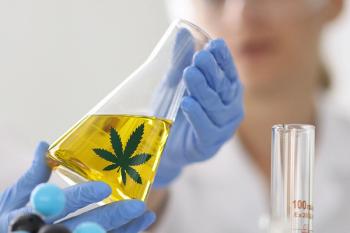
It is impossible to obtain potency accuracy in cannabis analysis. Here, we suggest some solutions to the problem.

It is impossible to obtain potency accuracy in cannabis analysis. Here, we suggest some solutions to the problem.

Here, we explore how the different parameters in the Master Resolution Equation relate to Fs, and what that means for chromatographic experiments.

We finally present the Master Resolution Equation for chromatography, which combines all three measures of separation quality, and an understanding of these parameters will go a long way towards allowing you to rationally develop chromatographic methods.

Here we discuss diffusion and see how a quantity called plate number is used to measure the amount of band spreading.

A review of the concept of separation factors and a discussion on developing a method for measuring peak width including triangulation followed by the introduction of the concept of chromatographic resolution for a pair of peaks.

The current challenges and future perspectives of the purification of cannabinoids from cannabis extracts are presented in this review article.

A novel liquid chromatography–tandem mass spectrometry (LC–MS/MS) method with a dual electrospray ionization (ESI) and atmospheric pressure chemical ionization (APCI) source was developed for analyzing 102 pesticides and five mycotoxins that are regulated by the state of Colorado in hemp.

Don't miss this Noid Factoid from Dr. Julie Kowalski of JA Kowalski Science Support LLC.

Part IV of this series discusses the capacity factor of chromatographic peaks to calculate separation factors, whose value tells us how well two peaks are or aren’t separated. We then introduce the reality of peak widths and how they impact separation quality.

Part III of this series will delve into understanding how to optimize methods for chromatographic separations, Smith will also introduce the concepts of capacity factor and selectivity.

Part II of this series looks at the mechanism via which molecules move through HPLC columns and leads us to a discussion on the equations used to characterize separations.

In the work presented here, the authors pursue a more detailed understanding of the naturally rare occurring cannabinoid analogue, hexahydrocannabinol (HHC), by exploring the safety profile using a third-party lab to produce preclinical in vitro safety profile data. The purpose of these studies is to demonstrate HHC as a safe cannabinoid for potential human consumption.

This article examines why we should be studying the cannabinoids beyond THC and CBD in order to explore their potential medical value.

In the work presented here, the authors evaluated the effects of variable red-light exposure on the phytochemical content of four Group III cannabis cultivars.

Let’s investigate the differences between the commercially available detector in terms of sample type, size, and selectivity to understand which detectors fit into the most common types of cannabis GC analyses.

This article investigates the chiral method development screening for the enantiomeric separation of synthetic CBD on polysaccharide-based chiral stationary phases with both normal-phase and reversed phase mobile phases, using HPLC and UHPLC.

Let’s try to understand the functioning and chemistry of GC columns and how to change and manipulate the resolution equation and column chemistry to maximize our own analyses.

This study focuses on a step-by-step optimization of commercial scale preparative HPLC purification of cannabinoids, specifically cannabidiol, starting with stationary reversed-phase screening, followed by method optimization.

It is demonstrated in this paper that cell viability can be used to determine dose and response effects that are important in understanding toxicities and to detect differences in similar hemp products.

In part I of this series on statistical concepts related to cannabis analysis, we introduce the normal distribution, standard deviation, and how to calculate precision and accuracy.

What is the overall scope of spectroscopy and how can it be used as a tool to improve analyses?

We finish looking at liquid chromatography with a deeper examination of the mechanics, physics, and chemistry of different spectrometers that are used in analytical laboratories.

A number of misconceptions people have about how to test, what to test, and when to test in the cannabis industry are dispelled.

A systematic literature review to identify and compare analytical methods used for the determination of cannabinoids in different matrices using LC-based systems.

A deeper look into the chemistry, physics, and methodology of HPLC methods.